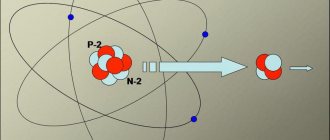First aid for radiation exposure
Radiation exposure is very dangerous to the human body, so if you are in a place where radiation is present, it is always necessary to use a measuring device. A dosimeter is a device for measuring radiation and is a faithful assistant and bodyguard in contaminated areas. If exposure does occur, the necessary first aid should be provided:
- avoid direct influence of rays,
- take a radioprotector and stable iodine,
- wash thoroughly in the shower,
- contact the medical unit for professional help.
If a person has been injured, the following actions must be taken:
- rinse the wound under water and disinfect,
- treat the affected area with hydrogen peroxide to remove radionuclides,
- bandage the area with a sterile or aseptic dressing,
- relieve pain if necessary,
- In case of a fracture, apply a splint.
What is radioactive radiation?
The characteristics of radioactive radiation are quite simple and structural, but this does not mean at all that radioactivity is so safe for the human body.
Radioactive elements have been present in our atmosphere and in the composition of the Earth since their very origin, but the concept of “radiation” began to be considered a little more than a century ago.
Radiation from the decay of atomic nuclei has quite a lot of force to ionize substances such as water, air, metals, the human body and much more.
By ionization of a substance we mean a change in its physical and chemical structure and properties, as well as a violation of the viability and functions important for life (for living organisms).
Types of radioactive radiation are mainly cosmic rays entering the atmosphere of our Earth, or originating from materials hidden in the earth, which negatively affect biological organisms.
Radioactive radiation and its types:
- alpha radiation,
- beta radiation,
- gamma radiation.
Alpha radiation is the emission of positively tuned particles (nuclei of helium atoms).
Beta radiation appears due to the transition of elements in the atomic nucleus, during which the properties of nucleons change.
Alpha and beta particles have fairly weak translational properties and do not harm living organisms.
Gamma radiation is photon energy emission.
As for the penetrating power of gamma radiation, it is quite strong and can be contained by lead or concrete.
From all this, a conclusion emerges: organisms living on Earth can be exposed to external irradiation due to the influence of gamma particles and internal irradiation due to alpha and beta particles.
Also, in nature there is such a thing as radio frequency radiation - this is electromagnetic radiation created by people, which can often be found in everyday life (in digital and kitchen appliances, in radios and much more). In moderate quantities, they do not pose a particular danger to life.
A special computing device, a dosimeter, can help calculate the degree of radioactivity. By the way, this device is an indispensable tool in work involving any type of radioactive radiation.
Mechanism of action on the body
Radiation causes a number of reversible and irreversible changes in the body.
The main mechanism of action is the ionization processes of the atoms that make up the biomolecule. The disintegration of complex molecules when chemical bonds are broken is a direct consequence of radiation.
A major role in the development of negative biological effects belongs to radiation-chemical changes associated with the products of water radiolysis. Highly active hydrogen compounds enter into chemical reactions with biomolecules, which contributes to disruption of the body’s biochemical processes. At the same time, normal metabolic processes are disrupted, tissue development slows down and stops, new chemical compounds and substances are formed that are not characteristic of the body and are dangerous for it. This causes disruption of the functioning of individual organs and systems of the body.
Health implications
The effect of radioactive rays on the human body always leads to complications. But the degree of complications depends on how quickly and correctly assistance was provided for the injury. The most immediate health consequences are residual factors of first-degree damage. The consequences of second and third degree radiation can have quite a negative impact on health (from skin diseases, damage to the mucous membrane and respiratory systems and ending with cancer or even death).
Cumulative effect
Some radioactive elements are absorbed and accumulated in certain organs, which leads to particularly high local radiation intensity, even in conditions of generally low levels.
Calcium, radium, strontium and other related elements accumulate in bones, iodine isotopes accumulate in thyroid tissue, and some rare earth elements are mainly concentrated in the liver. Cesium and rubidium isotopes are evenly distributed throughout the body; they cause inhibition of hematopoietic function, atrophy of the testes, and the development of soft tissue tumors.
Is radiation harmful or beneficial?
With increased doses of radiation, people cannot stand it and get sick, suffer and die. Scientists are also concerned about another aspect of this issue: what will be the effect of zero doses of radiation on the body? Benefit or harm? They say that during experiments on experimental animals, their immunity decreased and they soon died.
On our planet, radioactivity is a normal phenomenon and we cannot live without it. Yes, large doses have a detrimental effect on our health, but what about weak ones? What could happen to our health from such radiation?










